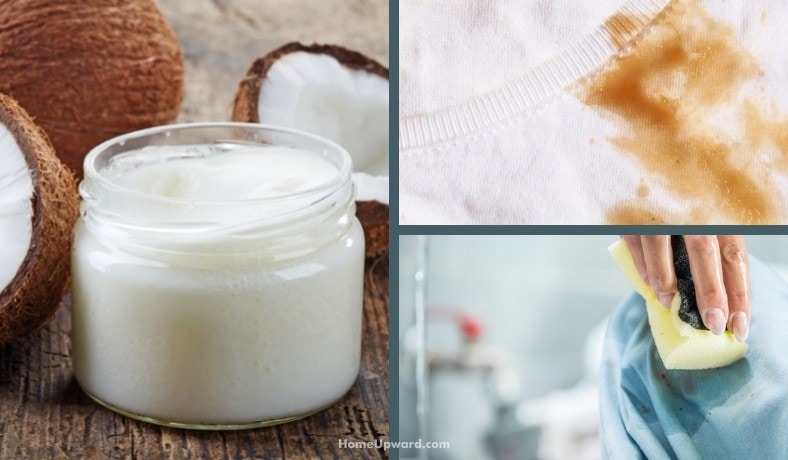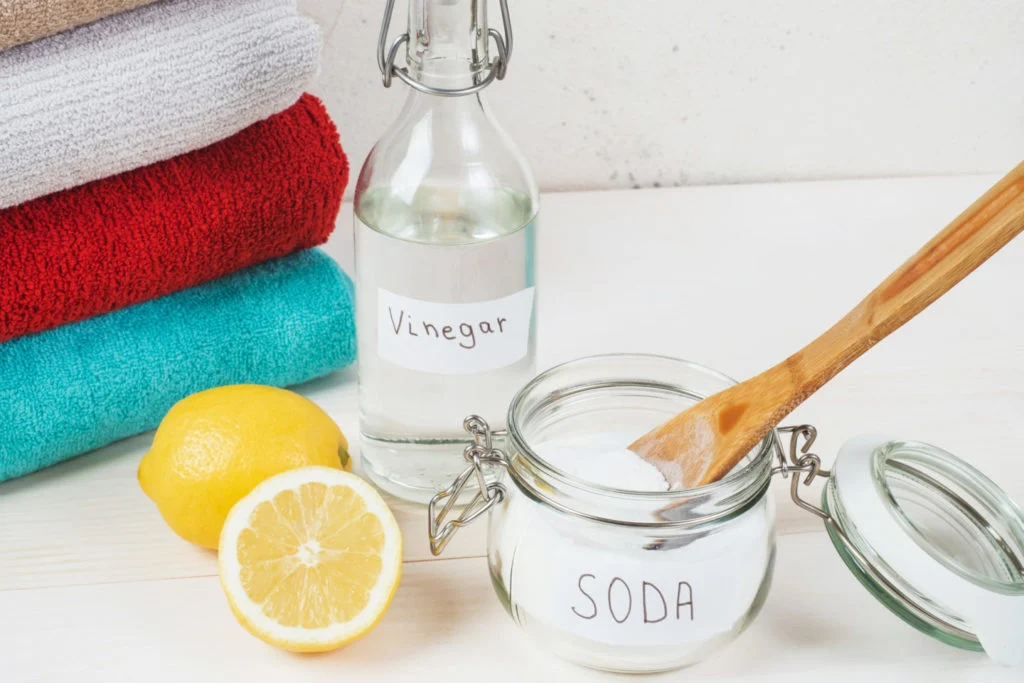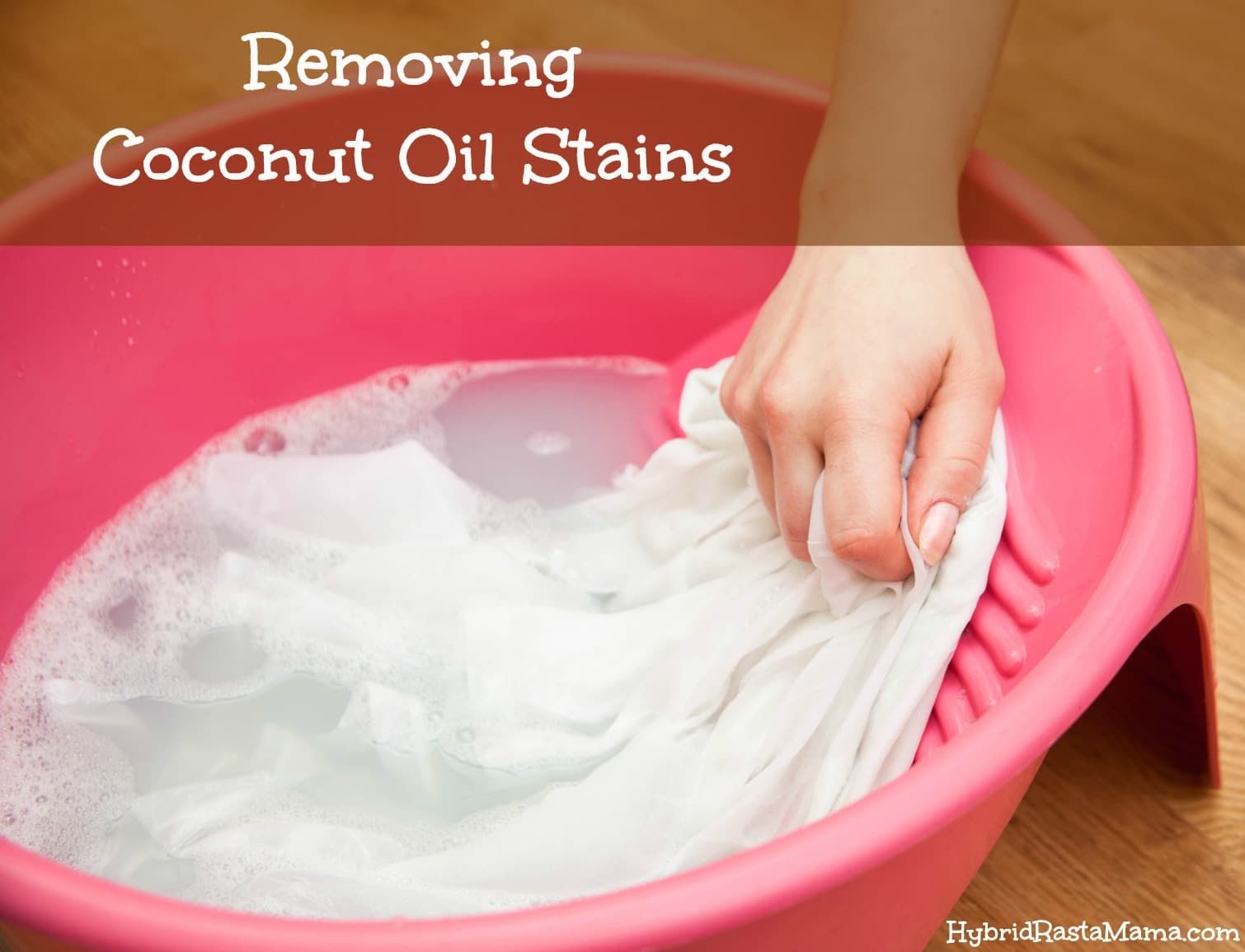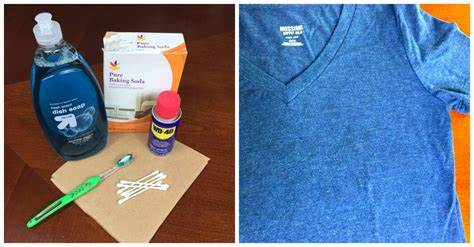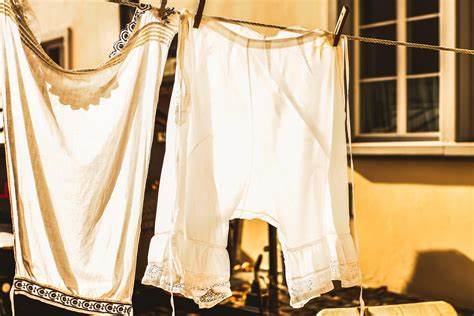Contents
Introduction to Removing Coconut Oil from Clothes
Coconut oil, with its myriad uses and health benefits, has found its way into numerous aspects of daily life, including cooking, skincare, and haircare routines. However, its versatile nature comes with a caveat: the potential for accidental spills and stains on clothing. When coconut oil infiltrates fabric fibers, it poses a formidable challenge, requiring prompt and effective intervention to prevent lasting damage.
The task of removing coconut oil stains from clothes is multifaceted, demanding a nuanced understanding of the oil’s composition, its interaction with various fabrics, and the most effective strategies for extraction. At the heart of this endeavor lies the preservation of garments—cherished pieces that represent not only personal style but also memories, experiences, and self-expression.
Understanding the intricacies of coconut oil stains entails delving into the molecular structure of this natural substance. Comprising primarily saturated fats, coconut oil exhibits unique properties that allow it to penetrate fabric fibers with ease, embedding itself within the intricate weave of threads. This inherent affinity for absorption presents a formidable challenge for those tasked with restoring garments to their pristine condition.
Moreover, the severity of coconut oil stains is influenced by a myriad of factors, including the type of fabric, the length of time elapsed since the spill, and the nature of the stain itself. Delicate fabrics such as silk or satin may prove more susceptible to damage, while porous materials like cotton or linen may absorb oil more readily, exacerbating the extent of the stain.
In the quest to remove coconut oil stains from clothes, time is of the essence. Prompt intervention is paramount to prevent the oil from permeating deeper into the fabric and setting permanently—a fate that could render garments unsalvageable. Thus, the importance of swift action cannot be overstated, underscoring the need for effective removal techniques and diligent attention to detail.
As we embark on this journey to conquer coconut oil stains, armed with knowledge, determination, and a dash of ingenuity, let us explore the intricacies of stain removal with diligence and resolve. In the following sections, we will delve into the practical strategies and proven methods for eradicating coconut oil stains from clothes, empowering individuals to reclaim their garments and preserve the integrity of their wardrobes.
Understanding Coconut Oil Stains
Coconut oil stains, though seemingly innocuous, present a formidable challenge to the integrity of clothing. To effectively combat these stains, it’s crucial to comprehend the intricate dynamics at play—the molecular composition of coconut oil, its interaction with fabric fibers, and the variables that influence the severity of stains.
Composition of Coconut Oil:
At its core, coconut oil consists primarily of saturated fats, which lend it a unique viscosity and affinity for absorption. These fats, in the form of triglycerides, boast hydrophobic properties, allowing them to penetrate fabric fibers and adhere tenaciously to surfaces. Understanding this chemical composition is essential for devising effective stain removal strategies tailored to the oil’s inherent properties.
Interaction with Fabric Fibers:
When coconut oil comes into contact with clothing, it seeks refuge within the intricate weave of fabric fibers—a process facilitated by its low surface tension and high lipid content. Once absorbed, the oil forms a resilient bond with the fabric, embedding itself within the matrix of threads and posing a significant challenge for removal. This intimate interaction underscores the need for targeted interventions capable of dislodging the oil from its entrenched position.
Variables Influencing Stain Severity:
The severity of coconut oil stains is not a one-size-fits-all phenomenon but rather a nuanced interplay of various factors. Fabric type plays a pivotal role, with porous materials like cotton and linen absorbing oil more readily than their synthetic counterparts. Additionally, the duration of exposure and the nature of the stain—whether fresh or aged—can significantly impact the difficulty of removal. By understanding these variables, individuals can tailor their stain removal efforts to suit the unique characteristics of each garment and optimize outcomes.
In unraveling the complexities of coconut oil stains, we gain valuable insights into the nature of the challenge before us. Armed with this knowledge, we are better equipped to devise targeted strategies and employ effective techniques for removing stains and restoring garments to their former glory. In the subsequent sections, we will explore practical approaches and proven methods for tackling coconut oil stains head-on, empowering individuals to preserve the longevity and appearance of their clothing repertoire.
Immediate Steps for Removal
When faced with a coconut oil stain on clothing, swift and decisive action is paramount to prevent the stain from setting and becoming more difficult to remove. The immediate steps taken in response to the spill can significantly impact the outcome of the stain removal process. Here, we explore the essential actions to take in the moments following a coconut oil mishap:
Blotting the Stain:
The first line of defense against a coconut oil stain is to blot the affected area with absorbent materials such as paper towels or clean cloths. Avoid rubbing the stain, as this can spread the oil further into the fabric and exacerbate the problem. Instead, gently press the absorbent material onto the stain, allowing it to soak up as much oil as possible.
Absorbent Powder Application:
After blotting the stain, apply an absorbent powder such as cornstarch or baking soda to the affected area. These powders work to draw out excess oil from the fabric fibers, helping to mitigate the severity of the stain. Liberally sprinkle the powder over the stain and allow it to sit for several minutes to absorb the oil.
By promptly implementing these immediate steps for stain removal, individuals can minimize the impact of coconut oil spills on their clothing and improve the efficacy of subsequent stain removal efforts. These initial interventions set the stage for more targeted treatments and increase the likelihood of achieving successful stain removal outcomes. In the following sections, we will delve into pre-treating the stain and laundering techniques designed to further address coconut oil stains and restore garments to their pristine condition.
Pre-Treating the Stain
Once the immediate steps for removing excess coconut oil from clothes have been taken, the next phase involves pre-treating the stain to further break down the oil molecules and prepare the fabric for laundering. Pre-treating is a critical step in the stain removal process, as it helps to loosen the oil from the fabric fibers and enhance the effectiveness of subsequent cleaning methods. Here are the key components of pre-treating a coconut oil stain:
Applying Dishwashing Liquid:
Dishwashing liquid is a highly effective agent for breaking down oil and grease stains, including coconut oil. Apply a small amount of dishwashing liquid directly to the stained area, ensuring that it covers the entire affected area. Use your fingers or a soft-bristled brush to gently massage the dishwashing liquid into the fabric, working it into the fibers to help release the oil.
Allowing Time for Penetration:
After applying the dishwashing liquid, allow it to penetrate the fabric for a sufficient amount of time. Typically, letting the pre-treatment sit for 10-15 minutes allows the dishwashing liquid to effectively emulsify the oil and loosen its grip on the fabric. This period of penetration enhances the dishwashing liquid’s ability to break down the oil molecules and prepare the stain for removal during laundering.
Pre-treating the stain with dishwashing liquid serves as a crucial precursor to the laundering process, priming the fabric for optimal oil removal and stain eradication. By allowing the dishwashing liquid to penetrate the fabric and work its magic, individuals can significantly improve the likelihood of successfully removing coconut oil stains from their clothing. In the subsequent sections, we will explore laundering techniques and specialized treatment options designed to further address stubborn coconut oil stains and restore garments to their original condition.
Laundering Techniques
Following the pre-treatment of coconut oil stains, laundering plays a pivotal role in completing the stain removal process and restoring garments to their original condition. Effective laundering techniques are essential for thoroughly cleansing the fabric and eliminating any residual oil and detergent residues. Here are the key components of effective laundering techniques for coconut oil stain removal:
Selecting Appropriate Water Temperature:
The water temperature used during laundering can significantly impact the efficacy of stain removal. For coconut oil stains, warm or hot water is generally recommended, as higher temperatures help to dissolve and lift oil residues more effectively. However, it’s important to consider the fabric type and garment care instructions, as some fabrics may be sensitive to heat and require cooler water temperatures to prevent damage.
Using Stain-Fighting Detergent:
Choosing the right detergent is crucial for effectively removing coconut oil stains during the washing cycle. Opt for a high-quality detergent with powerful stain-fighting properties, particularly formulated to tackle oil and grease stains. Enzyme-based detergents are particularly effective for breaking down oil molecules and lifting them from fabric fibers. Follow the manufacturer’s instructions for detergent usage and dosage to ensure optimal results.
Implementing these laundering techniques is essential for achieving thorough oil removal and restoring garments to their original condition. By selecting the appropriate water temperature and using a stain-fighting detergent, individuals can maximize the effectiveness of the washing cycle and eliminate stubborn coconut oil stains from their clothing. In the subsequent sections, we will explore specialized treatment options and post-treatment care strategies designed to further enhance the stain removal process and preserve the integrity of garments.
Specialized Treatment Options
In addition to traditional laundering techniques, specialized treatment options can further enhance the effectiveness of coconut oil stain removal from clothes. These targeted interventions are designed to address stubborn stains and restore garments to their pristine condition. Here are some specialized treatment options for tackling coconut oil stains:
Vinegar Solution Soak:
Vinegar is known for its natural cleaning properties and can be used to help remove stubborn oil stains from clothing. Mix equal parts white vinegar and water to create a vinegar solution. Submerge the stained garment in the solution and allow it to soak for several hours or overnight. The acidic nature of vinegar helps to break down oil residues and lift them from fabric fibers.
Commercial Stain Removers:
There are a variety of commercial stain removers available on the market specifically formulated to target oil and grease stains, including those caused by coconut oil. Choose a stain remover that is safe for use on the specific fabric type of your garment and follow the manufacturer’s instructions for application. Apply the stain remover directly to the affected area and allow it to penetrate the fabric before laundering.
These specialized treatment options offer additional avenues for effectively removing stubborn coconut oil stains from clothing. By incorporating vinegar solution soaks or commercial stain removers into the stain removal process, individuals can enhance the efficacy of their stain removal efforts and achieve optimal results. In the following sections, we will explore post-treatment care strategies and precautions to ensure the long-term preservation of garments following coconut oil stain removal.
Post-Treatment Care
Following the application of specialized treatment options and laundering techniques, post-treatment care is essential to ensure the long-term preservation of garments and prevent any potential damage or discoloration. Proper post-treatment care involves gentle handling of the fabric and adherence to recommended drying methods. Here are the key components of post-treatment care for garments:
Air Drying and Inspection:
After completing the stain removal process and laundering cycle, it’s important to allow the garment to air dry naturally. Avoid using high heat settings or tumble drying, as excessive heat can set any remaining oil residues and make stains more difficult to remove in the future. Once the garment is dry, inspect the treated area for any signs of lingering stains or discoloration. If stains persist, consider repeating the stain removal process or seeking professional assistance.
Repeating Treatment if Necessary:
In some cases, stubborn coconut oil stains may require multiple treatment attempts to achieve complete removal. If residual stains are still present after the initial treatment, consider repeating the stain removal process using the same or alternative methods. Persistence and patience are key when dealing with stubborn stains, and repeated treatments may be necessary to achieve satisfactory results.
By following these post-treatment care guidelines, individuals can ensure the effective removal of coconut oil stains from their garments while preserving the integrity and appearance of the fabric. With proper care and attention to detail, even the most stubborn stains can be effectively eradicated, allowing garments to be restored to their original condition. In the subsequent sections, we will explore additional tips and precautions for maintaining stain-free clothing and preventing future staining incidents.
Conclusion
In conclusion, the process of removing coconut oil stains from clothes is a multifaceted endeavor that requires a combination of immediate action, targeted treatments, and diligent post-treatment care. Coconut oil, with its unique composition and adhesive properties, poses a formidable challenge to fabric integrity, necessitating specialized interventions for effective stain removal.
By understanding the molecular composition of coconut oil, its interaction with fabric fibers, and the variables influencing stain severity, individuals can tailor their stain removal efforts to suit the specific characteristics of each garment. Immediate steps such as blotting the stain and applying absorbent powders help to mitigate the initial impact of the spill, while pre-treating the stain with dishwashing liquid prepares the fabric for thorough laundering.
Laundering techniques utilizing appropriate water temperature and stain-fighting detergents further enhance the effectiveness of stain removal, while specialized treatment options such as vinegar solution soaks and commercial stain removers offer additional avenues for tackling stubborn stains. Post-treatment care, including gentle air drying and inspection, ensures the long-term preservation of garments and prevents any potential damage or discoloration.
By incorporating these strategies into their stain removal efforts, individuals can effectively eradicate coconut oil stains from their clothing and restore garments to their original condition. Through persistence, patience, and attention to detail, even the most stubborn stains can be overcome, allowing clothing to be preserved and enjoyed for years to come.
As we conclude this exploration of coconut oil stain removal, let us reaffirm the importance of proactive stain management and care in maintaining the longevity and appearance of our clothing. By adopting a proactive approach to stain removal and incorporating best practices into our laundry routines, we can ensure that our garments remain clean, fresh, and stain-free, enhancing our overall sense of well-being and confidence in our appearance.

